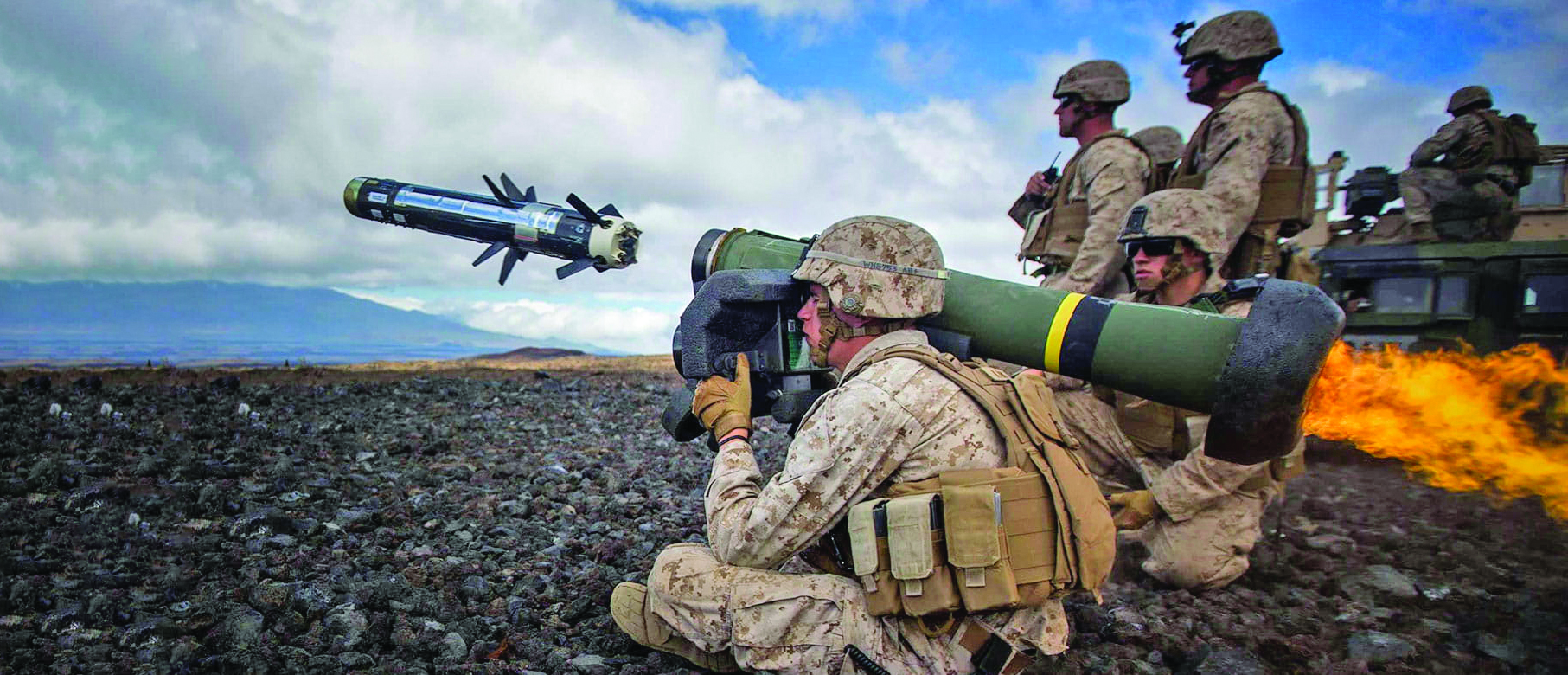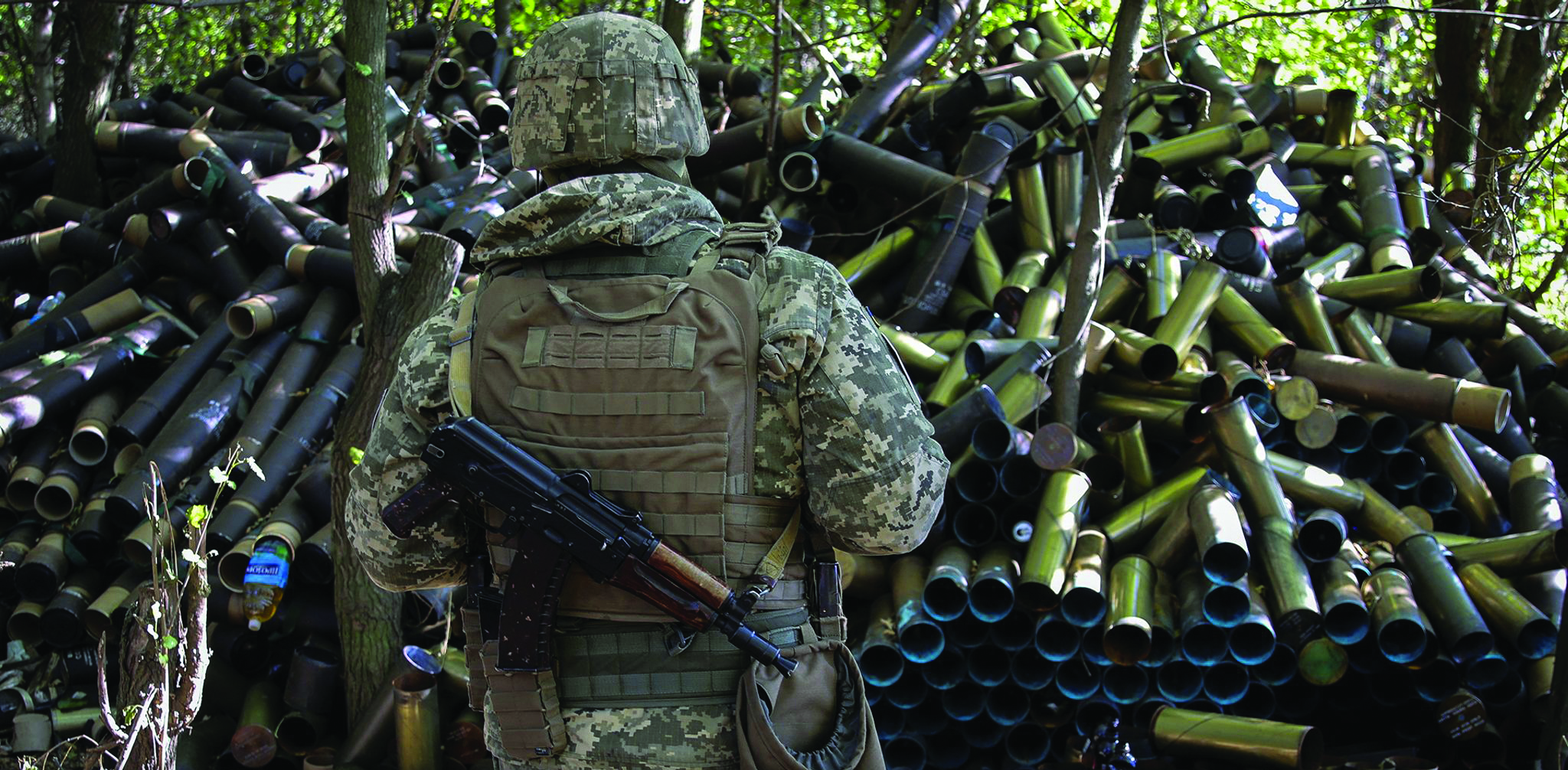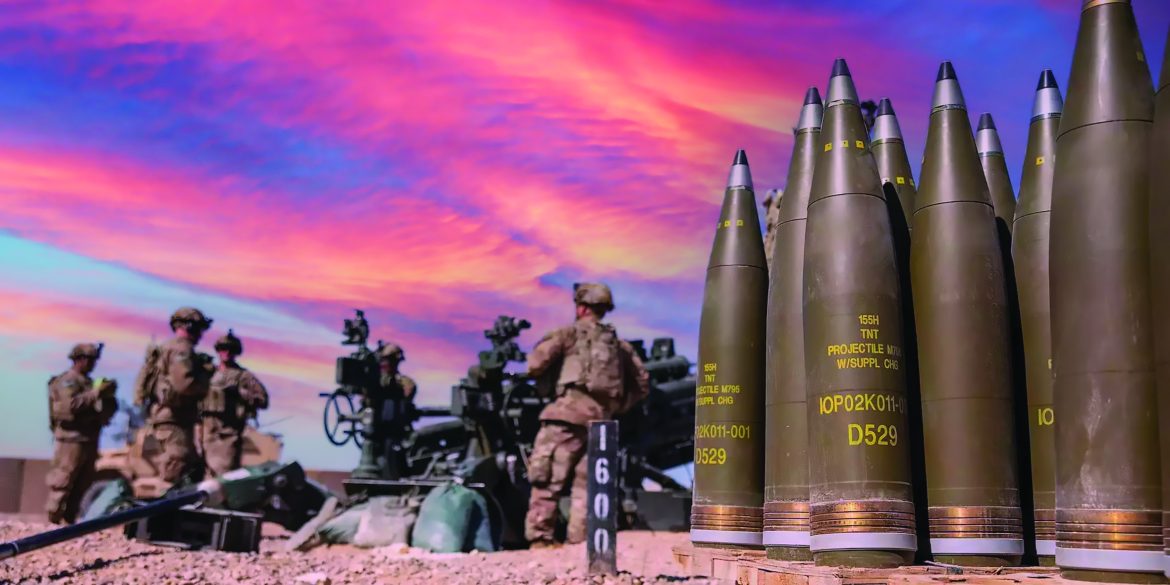Following the difficulties the United States faced in mobilizing its economy for war during World War I, Congress established the Army Industrial College (now Eisenhower School for National Security and Resource Strategy) which began operating in 1924. The aim was to mobilize the US defence industrial base to prepare for any future war.
This college proved effective during World War II, mobilizing the American economy for the war effort. However, after nearly a century since establishing this college, it appears the United States urgently needs to relearn its lessons on industrial mobilization for the great power competition.
The Russia-Ukraine war has exposed many shortcomings regarding the United States’ defence industrial capability. Some analyses have blamed the “Just-in-Time” production strategy to explain this limitation and Washington’s reluctance to replenish its stockpiles after sending large quantities of weapons to Ukraine.
This raises several questions about the nature of the “Just-in-Time” strategy and its actual implications for the US defence industrial base, not to mention the limits of readiness for this base.

The Nature of the “Just-in-Time” Strategy
The Just-in-Time (JIT) strategy refers to a new philosophy in corporate management and performance, primarily aiming to achieve efficient use of resources and reduce costs associated with supply, storage and production functions.
This contrasts with the traditional mass production approach which involves suppliers accumulating large inventories of materials to be converted into final products pushed out to markets without a real understanding of customer needs and demand.
Japanese automaker Toyota pioneered the use of this strategy to align with Lean Manufacturing and large-scale production lines. The principle of this strategy is to deliver parts and raw materials to the factory just in time for their use on the production line, without requiring any further modifications once received, ready for assembly into the final product.
Accordingly, this strategy is based on the idea of “producing each part of the product components in one of the production stations at the same time it is required by the next station and is ready to receive it, with customer demand being the starting point for all processes along the production line.
This ensures a consistent, streamlined flow of products tailored to customer demand while significantly reducing inventory levels”.
Key tenets of this strategy include reducing the supplier chain to enhance trust, minimizing inventory storage during production stages, reducing the need for a specialized labour force with various skills, while reducing manufacturing time and production batch sizes, and emphasis on preventive maintenance.
Therefore, the Just-in-Time strategy helps save costs by relying on less storage space for parts to be used in production, fewer workers to handle and transport these parts, and reducing wastage or parts needing maintenance.
The Dilemma of the US Defence Industrial Base
During World War II, the American defence industry played a critical role in supporting the Allied war effort, described by former US President Franklin Roosevelt as the “Arsenal of Democracy”. It took Washington over five years to build up its defence industrial base to full readiness for the war effort, but reaching this level now represents a major challenge for the United States.
In this context, US Defence Secretary Lloyd Austin told the Senate Armed Services Committee last March that the Pentagon is seeking to inject massive investments worth over $30 billion to expand the US defence industrial base.
Insufficient stockpiles of precision American weapons have long concerned the Pentagon and Congress, even before the Ukraine-Russia war, but current dynamics have exacerbated these concerns among US policymakers.
Although the 2023 National Defense Authorization Act allows for increased procurement of new munitions, reaching the desired numbers could take years at current production rates. This has led many analyses to re-propose the idea of increasing production levels as a way out of this dilemma, and the US Department of Defense is in fact taking steps to support this move.However, these moves face another predicament, mainly concerning the limited capacity of the US defence industrial base, especially amid declining investment in recent years.
This makes any attempt to increase production and replenish reserves extremely difficult and unable to meet allies’ requests within the required timeframe.
This argument may be supported by reports from the US-based National Defense Industrial Association (NDIA), which revealed in its latest 2022 issue a wide gap between the aspirations of the US National Defense Strategy and the current state of Washington’s industrial base. This is steadily shrinking with increasing obsolescence, thus becoming less capable of increasing production.
The report noted that the flexibility of the defence industrial base was sacrificed from the 1990s onwards, resulting in the loss of strengths that previously distinguished this base, including stable budgets, skilled workforce, diverse modern infrastructure, ongoing manufacturing innovation, and adequate capacity.
This was replaced by a Just-in-Time strategy providing little depth and agility to reshape in case of any unexpected conflict, conflicting with the current US National Defense Strategy stipulating that the US must be able to deter China or win any long-term conflict if deterrence efforts fail.
Several other factors affect the ability of the United States to increase its required military production for a protracted major war, perhaps most notably is the decline in the number of skilled workers employed in the defence industry, dropping to 1.1 million compared to about 3 million in 1985.
The same applies to companies operating in this industry, which lost over 17,000 firms just in the past five years alone. The US Department of Defence estimates the number of small businesses working for it has shrunk by 40% over the past decade, despite growing incentive packages designed to attract and retain these companies.
Moreover, defence spending has decreased from 5.8% in 1985 to about 3.2% of total GDP today and is projected to further decline to around 2.7% by 2036.
Furthermore, the decline in purchasing power and delays in necessary modernization, as well as a lack of adequate investment in infrastructure and capabilities, and over-reliance on single-source supply, have all contributed to the problem.
The Pentagon’s fluctuating demands between peacetime and war constitute another problem. For instance, production of the M142 HIMARS system stopped during 2013-2017 due to halting combat operations in Afghanistan and Iraq, while Javelin production dropped from 1,300 in 2009 to just 400 in 2013.
The US defence industrial base also faces another challenge in that many weapon parts, ammunition, ships and aircraft are manufactured abroad, including in China. Many components of solid rocket motors, shell casings, basic explosives and fuel elements, valves and machine tools are made in China.
Therefore, the idea of increasing production does not seem an easy task, especially since some production lines have already reached maximum capacity. This means any increase would require building new facilities and hiring more skilled workers.

Lean Manufacturing and US Defence Production
Some Western analyses have argued that the US Department of Defense’s reliance on the Just-in-Time strategy is one of the main constraints limiting America’s ability to increase defence production.
Maintaining adequate spare parts inventory could enhance companies’ ability to expand output. However, another view is that such criticism reflects an overly simplistic understanding of the huge costs companies would incur to maintain a warehouse full of the materials needed to increase production.
In this context, a report by the US Center for Strategic and International Studies (CSIS) pointed out that the defence industrial base relies on an incentive structure favouring lower-cost output over production capacity.
Although this incentive structure is primarily designed to ensure optimal allocation of taxpayer money, it has led to a reduction in the capacity of the US defence industrial base to achieve increased production.
Today there 5 major defence companies (Boeing, Lockheed Martin, General Dynamics, Raytheon and Northrop Grumman), which handle most of the US Department of Defense contracts, compared to about 51 major companies in the 1990s.
The Pentagon is technically the sole client for these companies, and any foreign sales must be facilitated through the U.S. federal government.
These five companies accounted for about $114 billion in contracts, while other major defence contractors account for $122.2 billion, with medium contractors accounting for another $7.9 billion, out of the total 2021 US military expenditure estimated at $711 billion.
These five major defence contractors adopted the concept of Lean Manufacturing, derived from the Just-in-Time strategy, to reduce costs in capital-intensive production.
However, many analysts argue that this strategy is not well suited to the defence industry, as it makes it extremely difficult to even consider attempting to increase production, especially with very few companies controlling supply chains. This reduces options if one supplier fails to deliver any part, which is further complicated by interlinks between the Pentagon’s five major contractors.
Ukraine and the Strain on the US Defence Industrial Base
Although the predicament of declining US defence industrial base capacity is not a novel issue, the Ukraine war exposed the limits of the problem due to the depletion of much of the US’s ammunition stockpile and the resulting pressure on the defence industrial base, especially amid rising tensions between the US and China over Taiwan.
The Russia-Ukraine war has underscored the importance of maintaining large stockpiles of weapons, negating any future operational plans assuming a short war.
Moreover, Pentagon top weapons buyer William LaPlante has hinted at the urgent need for the Department of Defense to pay more attention to the idea of increasing defence production levels, consistent with reports pointing to a noticeable decline in US stockpiles due to the huge quantities of weapons Washington has sent to support Ukraine.
These reports indicate that Washington’s stockpiles of 155mm M777 Howitzers, Javelin anti-tank systems, Stinger anti-aircraft missiles, and counter-artillery radars are suffering severe shortages, while stocks of the Harpoon coastal defence system, critical for supporting Taiwan, are moderate.
Moreover, a report published by the US-based Center for Strategic and International Studies warned that the next war the United States may fight will not give Washington a clear advantage in capabilities over its adversaries. Therefore, the US will need to wage a long war against a more capable opponent, which will make it desperately reliant on its industrial base.
The report noted that US military support for Ukraine, which relies on Washington’s stockpiles, has pushed many politicians to call for reviving the “Arsenal of Democracy” to refill empty warehouses and push the manufacturing sector to increase long-term production, but this still requires a comprehensive operational plan.
While the Russian-Ukrainian war gave defence contractors in Washington a strong financial boost, which left them looking forward to long-term contracts, these ambitions are tempered by growing fears of declining demand, which could hinder any moves to build new facilities and expand production capacity.
Similarly, some estimates have indicated that the Russian-Ukrainian war revealed that the United States needs a new policy for its defence industrial base, especially since Washington needs to provide its allies with supplies if a major conflict erupts while the ongoing conflict with Ukraine continues.
This would constitute a huge dilemma for the United States and jeopardize its ability to defend itself, particularly amid talk of a potential direct confrontation between China and the US over Taiwan in the coming years, which is causing growing concern in Washington about its ability to wage such a war.
Supply Chain Diversification
Supply chain constraints pose a fundamental challenge to any attempt at increasing production, which may be impossible under such restrictions.
For some subcontractors, defence production constitutes only a small portion of their total output, thus they may be unwilling to sacrifice more profitable relationships with other clients in favour of increasing the percentage of output shipped to defence contractors.
Given that investing to increase the supply of manufacturing inputs is essential to successful production growth, it is vital for the US to expand defence supply chains.
Furthermore, the Pentagon needs a comprehensive overview of different supply chains to enhance future problems predictability, akin to the Pentagon’s moves last September to halt delivery of an F-35 fighter jet to Lockheed Martin for one month after it was discovered that some components in the jet’s engine, made by China’s Honeywell, were unauthorized.
The US Department of Defence also needs effective coordination with defence contractors regarding the future scale of defence production, so these companies are not affected by the increase currently required for the Russian-Ukrainian war and the inevitable production reduction when the war ends.
This is to avoid a repeat of the scenario with the war on ISIS when the Pentagon invested in producing about 10,000 Hellfire missiles annually before suddenly declaring it no longer needed them.
Some estimates floated the idea of co-production as a solution to address current constraints on increasing US defence production. This entails training companies and defence contractors in US-allied nations to manufacture weapons systems or components, potentially providing additional, trusted supply chains and enhancing joint capabilities to produce these items, besides enabling stockpiles near theatres of operation.
However, some existing challenges may limit the chances of this proposal’s success, most notably restrictions on sharing military technology and information.
In conclusion, replenishing or increasing US weapons stockpiles within a reasonable timeframe requires massive investments to boost production capacity and output. But first, the capabilities of current facilities and factories must be assessed, and whether they have the necessary capabilities to expand domestic production. Increasing production capacity within existing plants also requires boosting various production inputs, including the size of the skilled labour force.●
By: Adnan Moussa (Assistant Lecturer at the Faculty of Economics and Political Science, Cairo University)













